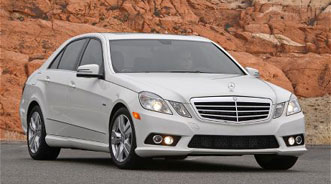Report: Vehicle Safety Most Compelling Element of Advertising for Consumers

What catches consumers’ eyes the most in automotive advertising? What truly affects their purchase behaviors?
According to Phoenix Marketing’s September Auto Insights report, ads were the most compelling to consumers this past month when the spots focused on safety.
Though speed, technology, and appearance might be some of the elements conveyed through most automotive advertising, it seems consumers are more concerned with their safety and what the vehicle can provide in this respect.
Phoenix Automotive shared that recent ads from major industry brands Chevrolet, Infiniti and Mercedes were found most compelling by consumers when they demonstrated the vehicle’s safety features.
And though luxury brands have capitalized on the safety element more in the past, non-luxury vehicles now contain some of the more advanced safety technology, as well.
"Of course anyone with a strong sense of self-preservation will favor advances in safety technology. Some technologies that had been exclusive only to luxury vehicles in years past (e.g. automatic braking, blindspot detection, collision prevention) are now becoming available as options on non-luxury vehicles too," said Kevin Severance, senior research analyst, Phoenix Marketing International Automotive Team.
According to the report, safety was particularly important to luxury OEM advertising this past month.
In fact, the top luxury ad last month was Mercedes-Benz’s "Like a Human," which claims the brand’s safety technology might be hard to imagine, but "why you would want it is not."
In fact, this ad has performed at the top of Phoenix’ results since it first aired this past April.
But the company shared that these commercials don't just talk about safety.
Instead, "they demonstrate it by appealing to viewers’ emotions and rationale simultaneously," Severance said.
Severance shared that "relevant demonstration" has worked well in the past, meaning OEMs need to show the safety features in action.
Severance said, "Some of the latest safety technologies that we've seen demonstrated in ads include things like environmental detection with automatic braking, sensors that aid in blind spot awareness or assist in lane-keeping, or back-up cameras that can detect obstacles and brake automatically."
He explained that other methods manufacturers have used in the past involve showing a vehicle in a crash test or in a research setting and then boasting safety ratings or listing safety measures can still be effective in making an impact on audiences.
That said, Severance contends the best ads find a way to connect on a deeper level.
"There have been a number of effective ads recently that show the safety features in action in relatable, familiar scenarios, not only preventing collisions, but in some cases saving lives," he said.
“Recent ads from Mercedes and Infiniti show the vehicles detecting children at play (unseen by the driver) in a suburban neighborhood setting, then automatically apply the brakes in order to avert disaster. These are great examples of tactics that convey function in a familiar way, thereby making a relatable impact through 'relevant demonstration,'" he continued.
On the non-luxury side, fuel efficiency was also a topic consumers were tuning into in automotive advertising this past month.
The top non-luxury ad was "The Fun Car," which highlights the Toyota Prius.
"With a message that combines innovation and fuel-efficiency, vibrant visuals and an infectious jingle followed by an attractive incentive and a claim that the Prius Liftback is the No. 1 selling hybrid, there isn't much, if anything, that this ad does wrong," Severance said.
But as gas prices remain low, one might think consumer interest in fuel efficient vehicles might start waning.
Severance said though gas prices may be low for the time beings, he thinks consumers "are always cautiously optimistic" when it comes to rates at the gas pump.
"They're aware they can spike at any time, so in the big picture regarding the purchase of a vehicle, we think messages about improved fuel economy will continue to perform well," he said.
Also, it seems consumers may be equating fuel efficient technology with innovation and creativity.
"Fuel-efficiency is something we see playing a much stronger role in non-luxury segments, although because advances in alternative fuel technologies are linked with innovation, we also see luxury segment consumers respond favorably because they partially represent the 'latest and greatest' or because it strikes a chord as being more environmentally-friendly," Severance told Auto Remarketing.
Looking back at these results, it is interesting to note that technology wasn’t found to be among the most compelling elements in automotive advertising last month.
It seems consumers may have become numb to technological innovation, especially in-car entertainment, as they become more and more used to this type of technology.
"We don't think it's any secret that consumers are getting more and more accustomed to rapid advances in technology. A thirst for innovation is nothing unusual in the automotive industry as innovation accelerates sophistication of safety, performance, and fuel-efficiency technologies: concepts that prevail in the minds of automotive consumers," said Severance.
Innovation still remains a key driver in advertising.
"Ads that convey a particular automotive brand is at the forefront of those (safety, performance, and fuel-efficiency technologies) advances tend to lend to perform well," said Severance.
Continue the conversation with Auto Remarketing on both LinkedIn and Twitter.


